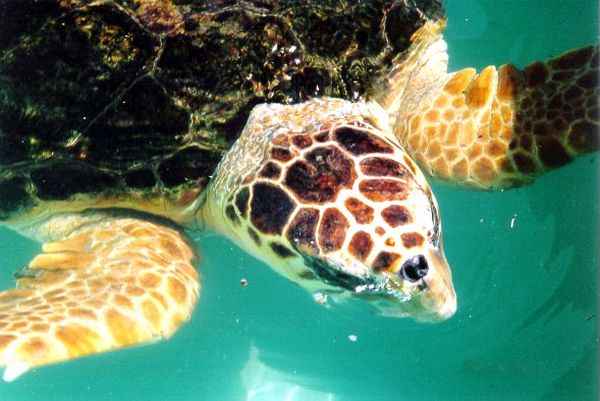|

Close-up of a loggerhead sea turtle. The pattern of scutes between the eyes distinguishes species
Image by US National Park Service - License: Public Domain. (view image details)
|
|
|
LOGGERHEAD TURTLE FACTS |
Description
The Loggerhead Turtle has a large head. The body is reddish brown or brown. They have flippers with a claw on the front flippers. The shell is armoured with strong horny plates called scutes.
Habitat
lives in the ocean. The female comes ashore only to lay eggs
Food
molluscs, crustaceans, sea urchins, jellyfish
Breeding
the female can lay over 100 eggs. She comes ashore onto the beach, digs a hole in the sand to lay the eggs, then covers them with sand using her flippers. Hatchlings make their own way to the water. Only a few of the young make it to the ocean - monitors and wild pigs dig up the nests and eat the eggs, and gulls and crabs catch the young turtles as they make their way to the water.
Range
The Loggerhead is found in tropical warm temperate waters of the world. In Australia it is most common along the Great Barrier Reef, but is also sometimes found around other parts of the coast except the south west.

Credits:
Map is from Atlas of Living Australia website at https://biocache.ala.org.au licensed under Creative Commons Attribution 3.0 License.
Conservation Status
The conservation status in the 2004 IUCN Red List of Threatened Animals is "endangered".
Classification
| Class: | Reptilia | | Order: | Testudines | | Family: | Cheloniidae | | Genus: | Caretta | | Species: | caretta | | Common Name: | Loggerhead Turtle |
|
|

